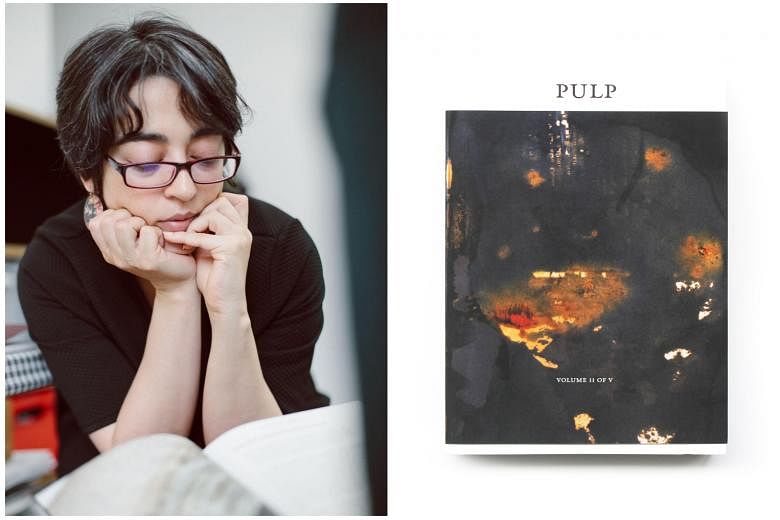NON-FICTION
PULP II: A VISUAL BIBLIOGRAPHY OF THE BANISHED BOOK
By Shubigi Rao
Rock Paper Fire/Paperback/ 400 pages/$50 before GST/ Books Kinokuniya, BooksActually, Objectifs
4 stars
This book says it is a bibliography, but there is really no point trying to categorise it.
It is the sophomore volume to come out of Pulp, India-born Singaporean artist Shubigi Rao's decade-long project on book destruction, which she began in 2014 and which has been garnering attention and acclaim of late.
Last year, she won the Jurors' Choice Award at the APB Foundation Signature Art Prize for the first portion of the work. Pulp I: A Short Biography Of The Banished Book (2016) was also shortlisted for the Singapore Literature Prize.
Parts of Pulp - including the two volumes - are on show at the National Museum of Singapore in Unhomed Belongings, an exhibition of Rao's works alongside those of American actress Lucy Liu's.
The Pulp books defy definition. Art book, archive, academic text or artefact? Pulp I ambled along with Borgesian blitheness and little care for category, which made for an intriguing, if at times frustrating, read.
Pulp II is more focused, training its lens on those on the frontlines of saving books: the caretakers of rare volumes, the translators of lost texts, the librarians contesting the censorship of their collections.
What comes across is the enormous task that is the transmission of knowledge, hindered by a decay that would be obstacle enough without throwing humanity's awful tendency towards violence in the mix.
Rao probes the tension between the book as object and the book as symbol. In one interview, the curator of Antwerp's Hendrik Conscience Library reflects on the conundrum of ancient books so fragile that reading them would ruin them.
"It's disappearing slowly, we can't do anything to save it," he says. "We can't show it to people outside of this room and we can't allow people to enter this room. So why are we keeping it? It's kind of a metaphysical object."
A particular tragedy that runs through the book like a mineral seam is the burning of Vijecnica, the national library of Sarajevo, which was destroyed by shelling in 1992.
Rao returns over and over again to that scene through interviews with witnesses: the firefighters battling flames from incendiary bombs and the librarians and civilians who braved sniper fire to run in and save the library's nearly two million books.
One librarian, Aida Buturovic, was killed by shrapnel. Most of the collection was destroyed; what was saved still remains unhoused today.
Rao's primary interest is documentation and it is this that drives the book, rather than narrative structure. Yet her bibliophilia is palpable in these pages, especially in the loving close-up shots of faded script, yellowed pages and books with bullet holes in them.
This rambling tome is at times wonderfully esoteric - a section called An Imprecise Indexical is full of abstract drawings - and at times raw and sad, ever incomplete.
It is perhaps best read not as a single journey, cover to cover, but as if one were wandering shelf to shelf in a library, aware always of one's insurmountable ignorance of all the evanescent knowledge in the world.
If you like this, read: The Library Book by Susan Orlean (Simon & Schuster, 2018, $49.22, Books Kinokuniya), an unusual investigation into the unsolved mystery of the catastrophic 1986 Los Angeles Public Library fire.


